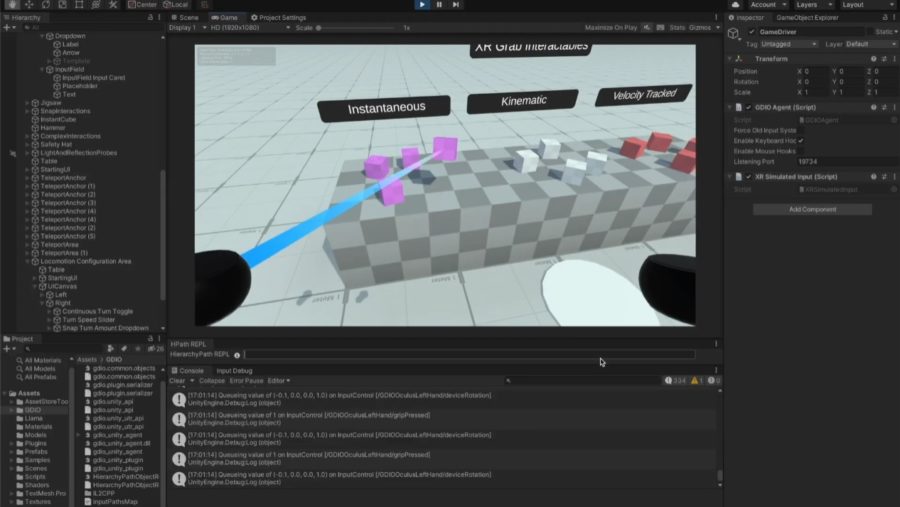
Discover how test automation has the potential to introduce many multi-faceted benefits in XR development and across XR projects.
This is a contributed piece written by John Pattee, Content Marketing Specialist at GameDriver.
—
Innovation in the XR industry is growing exponentially, and the technology is being used for tasks with increasingly higher stakes. Surgical simulation, energy sector training, defense contractor use, and many other examples demand high levels of quality and reliability. These diverse examples are part of the reason XR is set to contribute $760 billion to the U.S. economy by 2035, according to a recent study by Deloitte.
Considering all of these factors, quality assurance will likely hold greater significance in this space going forward. However, development environments that use game engines have yet to fully embrace a critical tool: test automation.
Test automation solutions have the potential to introduce multi-faceted benefits across any XR project. Let’s go over a few of these benefits and assess how this shift in testing practices can prepare any XR developer for rapidly-changing industries that are adopting XR.
Save time on manual XR testing
Manual testing is still a crucial part of build verification. On the other hand, there are many instances where automated testing can reduce the burden on testers amidst key sprints. Automation is starting to enter the fold, but it’s still important to highlight use cases that can be replicated for an immediate impact.
Regression testing is a prime example. As new builds come through, this kind of testing is essential, ensuring that no new content negatively impacts the functionality of existing content. Given that there isn’t much subjectivity to this kind of verification, test automation can be deployed to run through basic test scripts that track key objects against a host of variables and instances.
As more basic test scripts are built up over development, the available time and resources will begin compounding, freeing up testers to conduct manual work where it matters most. This is where nuanced factors like sensory feedback and the subjective “feel” of a product can be addressed.
Combining these approaches can yield excellent results without sacrificing the quality of your XR product.

Retrievable test scripts for safety compliance
Various organizations are emerging for the purposes of standardizing safety measures across VR, AR, and other mixed reality technology. Whether it’s for broader metaverse work, or specific to an industry like manufacturing, XR developers can expect various governing bodies to verify their work from a safety and functionality standpoint.
With test automation, the ability to meet these standards becomes far less complex with retrievable scripts. As opposed to tracking manual tests, QA teams can compile a database of various scripts that perform basic checks, and showcase just how many times each script has been run.
This provides a solid, measurable approach to safety compliance that could prove to be crucial in a variety of industries going forward.
Reduce VR motion sickness
One difficulty worth considering is the motion sickness experienced by manual testers. While VR is just one piece of the broader XR ecosystem, it’s a notable one. In fact, 91% percent of businesses are using, or are planning to leverage, VR or AR technology. This means that software and hardware output will continue to drastically ramp up. Given that roughly 1 in 3 people experience motion sickness when using VR, it means that QA teams need to plan for this human obstacle accordingly.
Thankfully, some test automation tools offer simulated XR input support, meaning that a headset and its corresponding inputs can be replicated during an automated test. This is yet another way in which developers can save time across functionality verification, while avoiding difficulties or brief delays brought on by motion sickness.
Face a growing XR industry head-on
Manual testing should always play a role in verifying XR products. But with the growing importance of quality, rising XR adoption rates, and further funding entering the market, all professionals in charge of quality need to consider implementing test automation.
At the end of the day, both XR hardware and software are built by humans for other humans to use. Manual testing will always be needed to verify that “human touch”, but the rigorous, repetitive forms of testing in between can be aided by the emerging capabilities of test automation. If more XR products can be produced with better quality in less time, this technology can achieve its life-saving, innovative, business-altering potential.
Image / video credit: GameDriver / YouTube
About the author
Sam is the Founder and Managing Editor of Auganix. With a background in research and report writing, he has been covering XR industry news for the past seven years.
